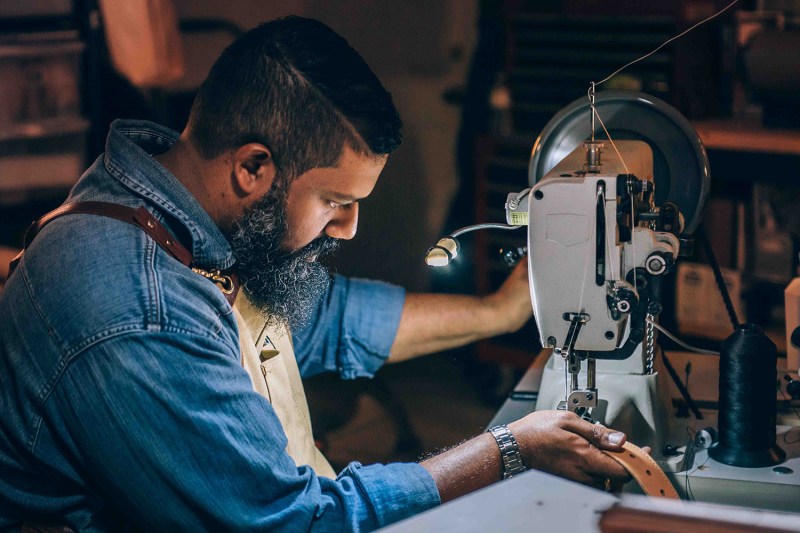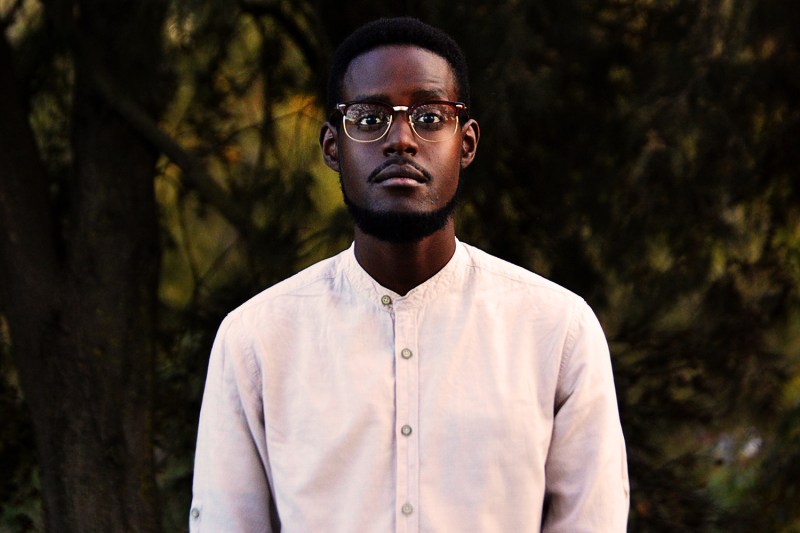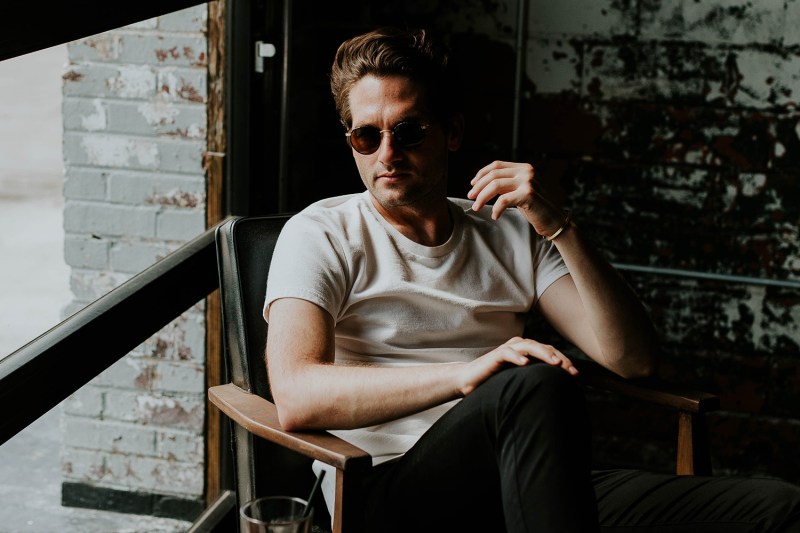
Does it seem like the work of the 21st century has so far been largely occupied by unraveling some of the “progress” of the 20th? From industrial practices to the food system and so much more, the developed world is finding that many of the time-saving, convenience-making innovations that delighted our parents and grandparents might have been better left alone.
The problem isn’t speed or convenience, per se. It’s the way speed and convenience fuel the rate of consumption. Take fast food as an example: While there’s nothing wrong with you and I enjoying a burger and fries, fast food makes it all too easy for us to compromise our health by eating them more often than we know we should. And as neuroscience shows us, the more we gratify a given desire, the greater our desire for it grows.
Maybe fast food isn’t your thing, but what about fast fashion? We live in a world where apparel companies, from mall retailers to high-end designers, promote lines and styles with a greater emphasis on frequency than quality. From mid-season releases to capsule collections, a month seldom goes by without a klatch of clothing brands competing for attention for their latest launch.
In order to keep up this pace, fashion manufacturers have to cut some major ethical corners. In response, it’s become commonplace for clothing companies to claim something called “slow fashion” as a guiding value.
What Is Slow Fashion?
To start with the obvious, it’s the opposite of “fast fashion.” Karen Templer, owner of Fringe Supply Co. and founder of Slow Fashion October, tells Interweave that slow fashion “primarily means not thinking of your clothes as disposable. It’s about trying to be informed and conscientious about where things are made, under what conditions, and at what human and environmental cost.” Instead of purchasing more pieces, producers of slow fashion focus on creating timeless pieces, while consumers focus on taking care of what they already own (mending clothing, sending shoes to a cobbler, working with a tailor to update garments).
To get a better grasp of slow fashion’s importance and a broader view on what companies are doing it well, I spoke with a couple of experts on the topic: Elizabeth de Cleyre, a clothing maker who writes eloquently on the topic from her newsletter The Cedeling, and Jeff Reuter, co-owner of men’s outfitter Northbound Supply Co. in Eau Claire, Wisconsin.
The Manual: Why is slow fashion important?
“Slow fashion is a way to address environmental, ecological, and humanitarian concerns with the fashion industry.”
Elizabeth de Cleyre: Slow fashion is a way to address environmental, ecological, and humanitarian concerns with the fashion industry. Human rights abuses and labor violations in the fast fashion industry have been discussed for decades now, and the conversation has expanded to include the environmental impact. Unfortunately, textile manufacturing and increased rates of consumption are doing a number on the environment. Slow fashion helps us step out of that cycle and tread more lightly on the Earth.
Jeff Reuter: It lets people know that there are people out there who believe in creating a quality item and take pride in what they are doing. Also, the whole aspect of responsibility in sourcing materials and treating the people who manufacture your items like actual people is a huge plus. I’d much prefer to buy a pair of jeans knowing that the person who sewed them isn’t operating under some questionable labor practices somewhere.

TM: Apart from the ethical implications, what are the advantages of slow fashion over mainstream fashion?
EDC: The main benefit for me has been reclaiming my time. When I buy well-made pieces, they last a lot longer, meaning I don’t need to shop as often or worry about how to mend items or dispose of clothes that are out of style. I’ve known men who say they hate shopping, but go to H&M every six months and buy a whole new wardrobe, which they throw out when it starts to wear in six months. Wouldn’t it be easier to just invest in timeless, well-made pieces?
The secondary benefit is that I find items that actually fit me and my lifestyle. When you’re chasing trends and purchasing things thoughtlessly, it’s OK if something doesn’t fit, because you won’t own it for long. But if I’m going to pay more for a well-made item, it really needs to be intentional and appropriate for my days.
Further Reading
- A Buyer’s Guide to Handmade Shoes and Sneaker Brands
- The Best American-Made Boot Brands to Shop Right Now
- Our Favorite Jeans and Denim Brands on the Market
- Why You Should Wear Hemp Clothing and Which Brands to Shop
JR: One big advantage is that people become more invested in their wardrobe. They consider each purchase more carefully and really take the time to understand what it is they are buying and how it suits their needs or wants vs. just buying off the rack at a big-box retailer. Another advantage is that, being that there are less of each item produced, our wardrobes can better reflect our individuality instead of adopting a herd mentality when it comes to fashion.
TM: How can you tell if a company is really following a slow fashion ethos or not?
EDC: A great indicator of a slow fashion brand is one that fine-tunes or tweaks patterns or styles over time as opposed to releasing new styles each week, month, or season. Their pieces are made with high-quality materials, with environmentally and ecologically sound practices, and in styles that will last. Another indicator is a brand that produces made-to-order garments.
There are companies that are frequently mentioned in “slow fashion” or “ethical” listicles but their rate of manufacturing and releases far outpaces most slow fashion brands, which focus on timeless, seasonless pieces. They might be “ethical,” but their slick marketing and frequent releases make me skeptical.
https://www.instagram.com/p/BxvDJbkF-lr/
JR: When you look at menswear, there have always been brands and designers that have taken their time to design new pieces or eke out one or two new items here and there. In the same vein, there have always been non-mass-produced items that wear forever and have classic designs that weather the coming and going of whatever is cool at the moment. And usually under this umbrella, the garments are made of higher quality materials and it shows.
TM: How hard is it to find and purchase clothing made according to slow fashion principles? Is it only for guys with lots of cash?
EDC: Thankfully, with direct-to-consumer brands and online shopping, it’s easier to find basics like shirts and pants. Suits have a long tradition of being made to order and made to measure — you might only need one well-crafted one. With shoes, it’s best to have a few pairs so they get to rest between wearings, as donning the same shoe every day will guarantee it breaks down faster. The up-front cost of slow fashion seems higher than what we’re used to, but over time, the cost per wear evens out.
“When you look at menswear, there have always been brands and designers that have taken their time to design new pieces or eke out one or two new items here and there.”
JR: I think leather items are some of the easiest slow fashion items to get, especially here in the Midwest. One of the first brands we brought into Northbound was a small family-owned leatherwork company. They were great to work with and had great heirloom-quality pieces.
The harder items to find are going to also be the more expensive ones, such as made-to-measure pieces or one-of-a-kind bags or accessories. But if you have something specific you’re looking for and you find it, that makes it all worthwhile. I looked for a selvedge denim jacket for years that had a particular look, and when I found one that fit, it was a great day.
TM: What are some ways that a guy can start experimenting with slow fashion without completely overhauling their wardrobe all at once?
EDC: There are three ways men can start experimenting with slow fashion without needing to completely overhaul their wardrobe all at once:
- Choose one piece at a time to replace, buy vintage or secondhand, and start learning how to mend your clothes (or find a tailor who can).
- Replacing one item at a time is a great way to slowly build up to a wardrobe of ethical and well-made pieces. When I buy well-made items, I don’t need to have multiples.
- Buying vintage or secondhand is a great way to slow your consumption of new items. Not buying new for a period of time is a great experiment. I don’t live in a city that has access to high-end consignment stores, so I love combing through eBay to find gems.
The great thing about men’s wardrobes is that they’re often already full of timeless pieces. By intentionally curating a wardrobe of well-made, new or secondhand pieces that can be mended or repaired, we save time each day getting dressed because choices are more streamlined. Likewise, it saves time and energy when you don’t have to frequently replace worn out or out-of-style pieces.

JR: One of the easiest ways for a guy to get into slow fashion is with jeans — there are so many great designers and companies putting out great quality denim. It’s super easy to slide in a classic pair of jeans into your existing wardrobe. I love finding a great pair of jeans that I know are going to last me years.
TM: What are a few slow fashion brands that you like?
EDC: Olderbrother
Jungmaven
Kit Culture
Based in Portland, Oregon, Duchess Clothier
I’m partial to the Wolverine 1000 Mile Boot — I have two pairs and they hold up so well. Likewise, Red Wing’s Heritage line
JR: I’ve got a real affinity towards Taylor Stitch
Buck Mason
DESO Supply
I would be remiss if I didn’t mention the Raleigh Denim jeans


